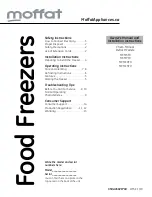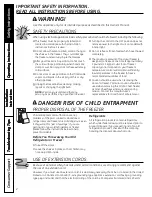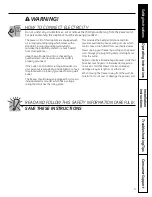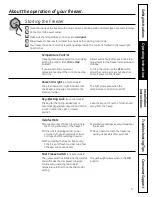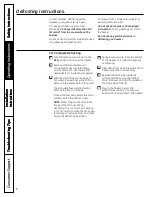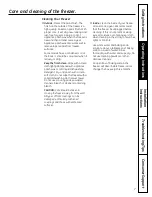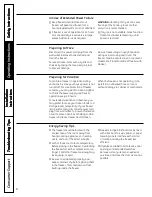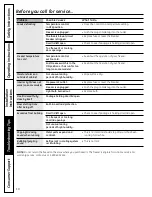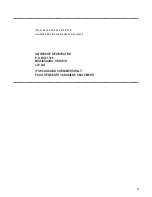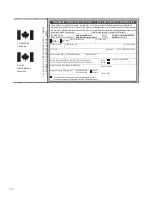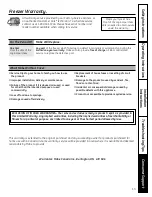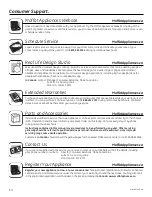
Co
ns
um
er
S
up
po
rt
Tr
ou
ble
sh
oo
tin
g T
ip
s
O
pe
ra
tin
g I
ns
tru
cti
on
s
Sa
fe
ty
In
str
uc
tio
ns
In
sta
lla
tio
n
In
str
uc
tio
ns
7
Care and cleaning of the freezer.
Cleaning Your Freezer
■
■
Outside.
Protect the paint finish. The
finish on the outside of the freezer is a
high quality, baked-on paint finish. With
proper care, it will stay new-looking and
rust-free for years. Apply a coat of
appliance polish wax when the freezer is
new and then at least twice a year.
Appliance polish wax also works well to
remove tape residue from freezer
surfaces.
Some models have a condenser coil at
the back. It should be vacuumed when it
is dusty or dirty.
Keep the finish clean.
Wipe with a clean
cloth lightly dampened with appliance
polish wax or mild liquid dishwashing
detergent. Dry and polish with a clean,
soft cloth. Do not wipe the freezer with a
soiled dishwashing cloth or wet towel.
Do not use scouring pads, powdered
cleaners, bleach or cleaners containing
bleach.
CAUTION:
Care should be taken in
moving the freezer away from the wall.
All types of floor coverings can be
damaged, particularly cushioned
coverings and those with embossed
surfaces.
■
■
Inside.
Clean the inside of your freezer
at least once a year. We recommend
that the freezer be unplugged before
cleaning. If this is not practical, wring
excess moisture out of sponge or cloth
when cleaning in the vicinity of switches,
lights or controls.
Use warm water and baking soda
solution—about a tablespoon of baking
soda to a quart of water. Rinse
thoroughly with water and wipe dry. Do
not use cleaning powders or other
abrasive cleaners.
An open box of baking soda in the
freezer will absorb stale freezer odors.
Change the box every three months.

